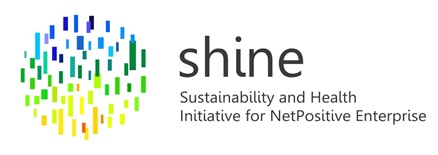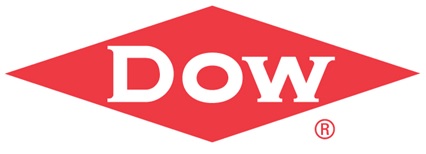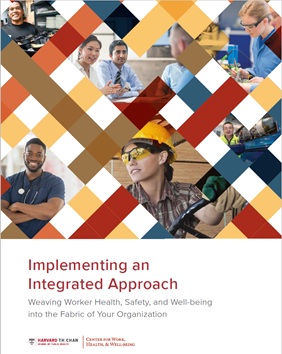Total Worker Health in Action: December 2017
Advancing worker safety, health, and well-being
Volume 6 Number 4 December 2017
Managers’ Buzz
L. Casey Chosewood, MD, MPH

We excitedly look ahead to May 2018 for the 2nd International Symposium to Advance Total Worker Health®. Your many abstract submissions are keeping our review team busy as we select the richest and most compelling content to feature at the symposium. We feel fortunate to have received more than 170 high-quality abstracts for this landmark meeting. With new content being added often, the newly-launched official web home of the symposium is a great place to visit now and frequently as the full agenda unfolds. Here you will be able register for the full symposium and pre-conference workshops, and plan your trip to the Washington, DC area to join us next May. Explore symposium keynote presentation topics, pre-conference workshops, and registration types in Updates from the Office for TWH.
In this issue and the next issue, we’re excited to highlight the work of two groups from Harvard University’s T.H. Chan School of Public Health – the Lee Kum Sheung Center for Health and Happiness and the Sustainability and Health Initiative for NetPositive Enterprise (SHINE) Program in the Center for Health and the Global Environment. Both are conducting research relevant to Total Worker Health (TWH). They are making contributions to the field by studying the factors that promote optimum functioning and the interplay between positive psychological well-being, positive social environments, and physical health, and by connecting business leaders with science to guide corporate responsibility, sustainability, and well-being. Read more about their unique work in this issue’s TWH Exclusive. Join us next issue for part two of this TWH Exclusive.
For years, the Dow Chemical Company has identified worker safety and health as a strategic priority for the company. To bring this strategy to its workforce, Dow has developed a comprehensive system based on TWH principles to help advance the well-being of the company’s employees. In Promising Practices for TWH, learn how Dow Chemical creates value through improving the quality of people’s lives and how they aim to create healthier, happier, and more productive workers through their TWH initiative.

Explore new resources from the NIOSH Centers of Excellence for TWH including webinars entitled Workplace Sexual Violence Prevention: Approaches and Action and Improving Conditions of Work: What Impacts Worker Health? We invite you to stay up-to-date on the latest Total Worker Health news, research, events, and more by joining the conversation on Twitter (@NIOSH_TWH), on the NIOSH Total Worker Health LinkedIn Group, or by email at twh@cdc.gov. And don’t forget, the official website of the 2nd International Symposium to Advance TWH is another great way to follow symposium news.

Lastly, you may have noticed one less picture than usual in this Manager’s Buzz. My long-time colleague and fellow adventurer in all things Total Worker Health, Dr. Anita Schill, recently retired from NIOSH. Her tireless leadership and many contributions to shepherding the emerging field of TWH will help guide TWH approaches in the years to come. We all will miss her greatly and wish her much continued happiness in all the days that lie ahead.

- Managers’ Buzz
- Total Worker Health Exclusive
- Updates from the NIOSH Office for Total Worker Health
- Updates from the NIOSH National Center for Productive Aging and Work
- Promising Practices for Total Worker Health
- Spotlight on NIOSH Fundamentals of Total Worker Health Approaches
- Updates from the NIOSH Centers of Excellence for Total Worker Health
- News from NIOSH TWH Affiliates and Partners
- New Publications and Resources
- Conferences, Webinars, and Trainings
Total Worker Health Exclusive
Shining the Light on Centers at the Harvard T.H. Chan School of Public Health – Part 1 of 2
Chia-Chia Chang, MBA, Partnership Development Lead, NIOSH Office for Total Worker Health
As loyal readers of Total Worker Health in Action!, you undoubtedly know that one of the six NIOSH-funded Centers of Excellence for TWH is the Center for Work, Health, and Well-being at the Harvard T.H. Chan School of Public Health. In addition to that center’s innovative work (read about their latest in this issue’s Updates section), other centers at the Harvard T.H. Chan School of Public Health are also conducting relevant research. We are bringing your attention to them to highlight some of Harvard’s connected and complementary efforts, all in support of TWH. Today we present part one of this two-part installment.

In the Center for Health and the Global Environment, the Sustainability and Health Initiative for NetPositive Enterprise (SHINE) is a network that connects business leaders with research to guide corporate responsibility, sustainability, and well-being. SHINE’s vision is to inspire all businesses to consider the health and well-being of their stakeholders for mutual benefit. SHINE Program Manager Karoline Barwinski explains that when people and companies advance positive change in health and the environment, these positive impacts are called “handprints”. When organizations make decisions and engage in activities that do more good than harm, the impact is measured as NetPositive. On the well-being side, SHINE examines integration of health and well-being into corporate culture, sustainability strategy, operating systems, and reporting, reaching across the Four P’s: People, Place, Products, and Planet.

SHINE collaborates with companies to understand how workplaces can create a culture of well-being by integrating purpose and meaning into work and ensuring employee’s basic needs are met. In 2013, the team developed a Worker Well-being Survey with Johnson and Johnson that measures physical, mental, and psychosocial health, as well as work performance and organizational culture. By asking workers for their perspective on how they are flourishing in the workplace and in their communities, the survey provides performance indicators for health and well-being that organizations can use to improve their well-being culture. For example, SHINE has helped Owens Corning, the industrial manufacturing company, understand the impact of mental health on injury rates, absenteeism, and other business metrics. The survey also includes a module on the physical environment; an architectural firm, EYP Architecture & Engineering, used the survey to examine issues such as how office location and commuting time affect well-being of employees. SHINE is also working with companies, including Levi Strauss & Co. and Target, and their supply chains, translating science into tools to guide companies to better protect human health throughout the value chain. Ms. Barwinski says the hope is that employers and researchers use the survey as a tool for identifying leading indicators for worker well-being and applying them in the business context to the benefit of workers and the organization as a whole – putting people back at the center of business.
As evidence grows linking worker well-being with the sustainability of companies, we can improve the quality of work life and productivity and contribute to a healthier world. NIOSH is pleased that researchers and organizations across a diversity of disciplines and industries are investigating the connections between work and well-being. Check back for part two of this TWH Exclusive in the first 2018 TWH in Action!
Updates from the NIOSH Office for Total Worker Health

Opening Day and Keynote presenters for the 2nd International Symposium to Advance Total Worker Health®: Professor Dame Carol Black, Mr. Tony Buettner, Dr. John Howard, Dr. Kimberly Jinnett, Mr. Hans-Horst Konkolewsky, and Dr. Robert Waldinger.
Registration Now Open for 2nd International Symposium to Advance Total Worker Health®
The 2nd International Symposium to Advance Total Worker Health will occur May 8–11, 2018, on the historic NIH campus in Bethesda, MD, just minutes from Washington, DC. Early registration is now open offering reduced registration rates until March 31, 2018. Special discounted rates are available for full-time students. You can also now register for a pre-conference workshop.
Join us to hear engaging keynote presentations:
- Worker Well-being and High Performance Workplaces: Two Sides of the Same Coin
- Global Challenges for Safety, Health, and Well-Being at Work: New Strategic Responses
- Blue Zones: Secrets of a Long Life
- What Science Can Tell Us about Living Well: Lessons from an 80-Year Longitudinal Study
- Total Worker Health: Its International Reach
Pre-conference workshops will emphasize applying TWH fundamentals and interventions. Workshop topics include:
- Addressing Future Workforce Needs through Total Worker Health®
- Engaging Small and Mid-Sized Enterprises to Apply Total Worker Health® Approaches through a Community-based Program
- Meeting the Challenge of Engagement in Participatory Total Worker Health® Initiatives
- Productive Aging and Work: A Framework for Creating an Age-Friendly Workplace
- The HealthiestNIOSH Experience: The Essential Roadmap to Developing Your Own Total Worker Health® Program
To learn more and register for the full symposium and supplemental pre-conference workshops, please visit the official website of the NIOSH TWH Symposium, at www.twhsymposium.org.
Updates from the NIOSH National Center for Productive Aging and Work (NCPAW)
October 12, NCPAW Co-Director Dr. Juliann Scholl gave an invited presentation at the Nebraska Safety Council Conference and Trade Show. Dr. Scholl reviewed the aging workforce landscape in the United States and discussed the benefits and considerations of hiring older workers. Additionally, on October 26, Dr. Scholl and Bermang Ortiz presented findings from the center’s project “Developing products to prevent WMSDs in construction workers across age groups.” The presentation was part of a workshop about prevention in high-risk industries, held during the fourth international Understanding Small Enterprise (USE) conference in Denver, Colorado. For more information on productive aging and work, visit the NCPAW website here and check out some of the tools and resources available about work and aging. Also, don’t forget to check out the latest co-sponsored NIOSH Total Worker Health® webinar on Interventions and Promising Practices in the Aging Workplace. CEU credits still are available for safety, nursing, medical and other professionals.
Promising Practices for Total Worker Health
September 2020 Update: Please visit Dow’s most recent Sustainability Report for an update on Dow’s progress in TWH or contact Dr. Annemieke De Wilde, Chief Medical Officer, for more information.
Chia-Chia Chang, MBA, Partnership Development Lead, NIOSH Office for Total Worker Health
Creating Value at Dow Chemical Through Total Worker Health Initiatives

The Dow Chemical Company, a global manufacturer and supplier of raw materials with approximately 54,000 employees in 300 sites in 49 countries, has identified employee safety and health as a strategic priority for the company. As part of this priority, a comprehensive system based on Total Worker Health® (TWH) addresses the complex challenges of advancing the well-being of the company’s employees. According to Thomas John Bender, MD, PhD, Dow’s Occupational Physician and Epidemiologist, the company recognizes that employee health is essential to the company’s sustainability. In fact, the company includes TWH implementation in its 2025 Sustainability Goals and reports regularly on progress in its sustainability reports. These efforts are a great example of integrating relevant systems to advance worker well-being, one of five defining elements of TWH. Dow has received recognition for its TWH initiative, including serving as a case study in the American Heart Association’s Workplace Health Playbook.

Dow’s TWH strategy has three interdependent elements: Healthy Culture, Healthy Workplace, and Healthy People.
- The Healthy Culture Index reflects the CDC Worksite Health Scorecard and includes organizational support, which covers topics such as flexible work options, leadership behaviors, return-to-work, and optimization of the match of the right people to the right job. Other metrics assessed by Healthy Culture are industrial hygiene work practices, work exposure assessment, access to healthy options, and employee health culture. Dow’s goal is to increase the percentage of sites that have implemented best practice interventions.
- The Healthy Workplace element aims to reduce chemical, physical, biological, and ergonomic stressors and emphasizes the hierarchy of controls. The goal is to reduce high priority health risks identified for each site and business.
- The Healthy People Index measures reduction in health risks and includes preventive health and occupational health metrics. Dow has specified target goals for improvements in health status and injury and illness rates and cases.
To monitor progress, Dow conducts medical and population surveillance and has systems for continuous improvement. An annual employee opinion survey includes questions about personal accountability for safety, protection from health and safety hazards, supportiveness of the work environment for healthy behaviors, and perceived interest by the company in employee health and well-being. Results appear in the company’s sustainability report and indicate that employee satisfaction has been continuously increasing.
The TWH concept is incorporated in Dow’s sustainability metrics. Participating in the Global Reporting Initiative (GRI) to assess and communicate its impact on sustainability of social, environmental, and financial well-being, the company identified World-Leading Operations Performance as one of seven 2025 sustainability goals. Included in this goal is implementation of Total Worker Health strategies “that comprehensively control workplace health risks, protect workers, and improve the health of Dow people.” The company’s website reports that world-leading performance has reached 16 percent of its 2025 goal and attributes some of the success to reductions in injury and illness rate and a successful start of the TWH Index. Overall, Dow aims to minimize its operational footprint, increase its handprint on positive contributions to the environment and society, and work with others to develop a blueprint for the future.
With the belief that improving the quality of people’s lives will “create value for Dow,” the company has a vision that its people will be healthier, happier, and more productive as a result of its TWH initiative. We look forward to checking back and hearing more about their progress.
Spotlight on NIOSH Fundamentals of Total Worker Health Approaches

Editors’ note: In this and several upcoming editions of TWH in Action!, we take a closer look at the fundamental elements of the TWH approach. Today we look at…
Defining Element 3: Promote and Support Worker Engagement throughout Program Design and Implementation
A participatory approach is a key tenant to a TWH approach and supports long-term sustainability, employee retention, and employee buy-in of programs and initiatives. When workers and supervisors jointly have a stake in identifying workplace safety and health issues and designing healthier work, it can help guarantee a sustainable program. Their input on program design and implementation can guide organizations to identify potential barriers to program effectiveness.
To learn more about the principle of worker engagement on your organization’s path toward Total Worker Health (TWH), visit NIOSH’s Fundamentals of TWH Approaches webpage.
Updates from the NIOSH Centers of Excellence for Total Worker Health
Harvard T.H. Chan School of Public Health Center for Work, Health, and Well-Being
On December 6, Director Glorian Sorensen and Associate Director Jack Dennerlein of the Center for Work, Health, & Well-being presented a one-hour webinar entitled “Improving Conditions of Work: What Impacts Worker Health?” as part of the Massachusetts Department of Public Health Working on Wellness Expert Series. This series includes presentations on health, safety and well-being in the workplace, including strategies that organizations can utilize to enhance wellness at work. To view the recording, please go to www.mawow.org/expert-series.
Dr. Glorian Sorensen is co-leading a MOOC (Massive Open Online Course) with Harvard Business School Professor Robert Huckman. They and other experts will be presenting on topics relevant to The Culture of Health, with an emphasis on protection and promotion of employee health, safety, and well-being. The one-hour session is one of nine in development for leaders of small to medium-sized organizations. Once completed and available to the public, the course will be available on the Center’s website, centerforworkhealth.sph.harvard.edu.
Course registration is open! The Harvard T.H. Chan School of Public Health Center for Work, Health & Well-being, in collaboration with the Harvard Chan School’s Center for Executive and Continuing Professional Education, is again offering Work, Health, and Well-being: Frameworks, Evidence, and Applications, April 18–20, 2018, in Boston. Learn from the industry’s leading experts on how to integrate siloed occupational health, health promotion, and health protection programs to enhance employee health, minimize work-related injuries and illnesses, and reduce employee health care-related costs.
Oregon Healthy Workforce Center (OHWC)
Two OHWC researchers have research projects in process. The Tech4Rest study, directed by Dr. Ryan Olson, is a randomized controlled trial. It investigates the impact of two factors on team truck drivers’ sleep, fatigue, performance, and well-being: (1) an enhanced truck cab (using BoseRide II seat and Thevorelief mattress) and (2) a behavioral sleep health program, Fit4Sleep. Pilot testing for the Fit4Sleep behavioral intervention will begin in January 2018. The Active Workplace Study, led by Dr. Brad Wipfli, is a randomized, controlled intervention project that targets exposure to sedentary work among call center employees. The study addresses organization and individual-level components and incorporates a Total Worker Health approach.
OHWC held a public health movie-night screening of A Day’s Work, co-sponsored by the Oregon Institute of Occupational Health Sciences and the OHSU/PSU School of Public Health, at the Oregon Health & Science University. A Day’s Work is an impactful documentary about the accidental death of Day Davis, a young worker on his first day on the job. A discussion with the film’s executive producer, Dave DeSario, followed the screening.
The OHWC and the Institute held the Study for Employment Retention of Veterans (SERVe) Employer Summit to celebrate the accomplishments of the SERVe study, share findings, recognize its research partners’ long-standing commitment, and discuss dissemination plans for the SERVe intervention. Read more about the study here. After the completion of a successful soft launch, the COMPASS program will officially launch in January 2018 within the Oregon Home Care Commission training system.
Connect with OHWC by viewing its YouTube channel; by visiting the blog, Oregon and the Workplace; by accessing materials in the Toolkit Kiosk and Resource Directory; and by getting updates via Twitter.
University of Illinois–Chicago (UIC) Center for Healthy Work
The Healthy Communities through Healthy Work team is planning an exciting series of meetings with partners from January through March 2018 to discuss research findings and next steps in tackling root causes of precarious employment and supporting facilitators to healthy work.
On November 3, co-director of outreach, Joe Zanoni, presented to the Occupational Health Nurses: Advocates for Worker Health. There was an engaging conversation about Total Worker Health® approaches. He also presented on the Center for Healthy Work and the various projects of Center faculty, staff, students, and community researchers.
On October 25, the Center for Healthy Work put on a hybrid in-person and online presentation, Workplace Sexual Violence Prevention: Approaches and Action. During the one-hour presentation, a panel of speakers described each of their organizations’ innovative solutions and answered questions related to workplace sexual violence prevention. The presentation covered the following learning objectives:
- Describe the phenomenon of workplace sexual violence and those it affects
- Identify a variety of approaches to prevention and the principles of these approaches, and
- Explore actions and initiatives for prevention.
You can access a recording of this important and very timely webinar here: https://vimeo.com/239991493.
University of Iowa Healthier Workforce Center of the Midwest (HWCMW)
The St. Louis Area Business Health Coalition, a HWCMW pilot grant recipient, is now a Total Worker Health Affiliate! Thank you to our allies in St. Louis for their commitment to advancing the health, safety, and well-being of employees throughout the region.
In just a few short weeks, the HWCMW will be releasing two new videos as part of the Total Worker Health In-Depth series. The video series features Midwest experts from academia and industry leaders sharing their expertise, tips, and experiences on issues relevant to Total Worker Health. In January, the Center will also kick off the 2nd Annual International HWCMW Limerick Contest.
Stay connected to HWCMW on Twitter, YouTube, and Facebook or subscribe to the monthly e-bulletin for updates.
News from our NIOSH TWH Affiliates and Partners
Join us in welcoming three new NIOSH TWH Affiliates!
Communications Workers of America (CWA)
The Communications Workers of America (CWA) represents 700,000 workers in private and public sector employment in the United States, Canada, and Puerto Rico. CWA members work in telecommunications and information technology, the airline industry, news media, broadcast and cable television, education, health care and public service, law enforcement, manufacturing, and other fields. CWA has partnered with TWH for years, contributing to the success of the 2014 TWH Symposium and the 2015 NIH Pathways to Prevention Workshop, and will be a Presenting Partner for the 2018 TWH Symposium.
St. Louis Area Business Health Coalition
The St. Louis Area Business Health Coalition (BHC) supports over 60 leading employers in their efforts to improve the well-being of their enrollees and enhance the quality and overall value of their investments in health benefits. Since its initiation in 1982, the BHC has evolved to offer innovative products and services, in-depth research on local and national health care trends, and collaborative leadership to help foster a culture of well-being in the community.
University of California, Irvine Center for Occupational and Environmental Health
This Center has several multidisciplinary program areas that are well-aligned with TWH principles – work organization and health, reproductive and developmental occupational and environmental health, children’s environmental health, and health effects of indoor and outdoor air pollutants. In strong partnership with local labor and community partners, the Center is conducting research projects to develop policies, programs, and practices that integrate protection from psychosocial, chemical, and physical hazards with prevention efforts to advance worker well-being and productivity. The Center is also developing a short, standardized work organization risk assessment tool to be used nationwide in the future. In addition, the Center has strong training programs in the core disciplines of Occupational and Environmental Medicine, Occupational and Environmental Epidemiology, Toxicology, and Exposure Science.
New Publications and Resources
“Doing what I do best”: The association between skill utilization and employee health, with healthy behavior as a mediator. NIOSH researcher Kaori Fujishiro and Catherine A. Heaney, of the Stanford Prevention Research Center, present data gathered through Gallup Daily tracking to show that employees who feel they have the opportunity to frequently use their natural skills and abilities are not only more productive but also happier and even healthier. Read more in the Gallup Blog here.
Four New Publications from NIOSH Centers of Excellence for Total Worker Health
An Inspection Tool and Process to Identify Modifiable Aspects of Acute Care Hospital Patient Care Units to Prevent Work-Related Musculoskeletal Disorders. Researchers at the Harvard T.H. Chan School of Public Health Center for Work, Health and Well-Being describe the development and application of an inspection tool and a process for identifying hazards inherent in the modifiable aspects of the physical environment to reduce injury risk to hospital workers. This article on development and implementation of the inspection tool provides guidance on modifying the physical work environment by means of ergonomic solutions.

Implementing an Integrated Approach: Weaving Worker Health, Safety, and Well-being into the Fabric of Your Organization. This guide from The Harvard T.H. Chan School of Public Health Center for Work, Health and Well-Being includes tools and real-world examples for creating and maintaining supportive working conditions to improve employee safety, health, and well-being. The guide enlists common management systems and processes to help organizations in these ways:
- motivate key worksite stakeholders to support and participate in an integrated approach;
- target efforts on working conditions related to organizational goals and objectives;
- plan and implement policies and practices that create and sustain positive working conditions; and
- evaluate and improve efforts to enhance worker safety, health, and well-being.
Occupation, the Work Environment, and Tobacco-Related Health Disparities, in A Socioecological Approach to Addressing Tobacco Related Health Disparities. Harvard Center researchers have contributed to this National Cancer Institute monograph, the most comprehensive review of tobacco use among racial/ethnic minority and low socioeconomic populations since the 1998 Surgeon General’s report.
The feasibility, safety, and efficacy of using a wireless pedometer to improve the activity level in a cohort of nurses. Harvard center researchers investigated (1) the feasibility, safety, and efficacy of using a wireless pedometer in a cohort of nurses; and (2) whether wireless pedometer use increased the number of steps walked, number of flights of stairs climbed, and daily activity level and improved personal perception of health. There was a significant increase from baseline to the end of the study in the following measures: self-perception of steps walked (p < .001), flights of stairs climbed (p < .005), and self-perception of daily activity (p < .001).
Conferences, Webinars, and Training in Support of NIOSH Total Worker Health
December 2017
15th—The Harvard T.H. Chan School of Public Health Center for Work, Health and Well-being hosted Peter Smith, PhD, a senior scientist at the Institute for Work and Health in Toronto, for a seminar titled Occupational Health and Safety Vulnerability: Why we need a new measure. The seminar will take place at 10:30 a.m. at Harvard T.H. Chan School of Public Health, Building 1, Room 1302.
March 2018
31st—Early registration for the 2nd International Symposium to Advance Total Worker Health® closes. Make sure to register by March 31st, 2018, to receive a discounted rate. Student and supplemental pre-conference workshop registration rates are also available.
May 8–11, 2018—The 2nd International Symposium to Advance Total Worker Health® returns to the campus of the National Institutes of Health, in Bethesda, Maryland. This is the only NIOSH-sponsored conference dedicated solely to advancing Total Worker Health research and practice. Esteemed presenters from nonprofit, government, private, and academic institutions will share the latest TWH research, perspectives, and practical applications.
Contributors
Editorial Board
L. Casey Chosewood, MD, MPH, Executive Editor
CDR Heidi Hudson, MPH, Editor-in-Chief
Reid Richards, Managing Editor
Seleen Collins, Copy Editor
Tonya White, NIOSH Web Editor
Steve Leonard, NIOSH Web Publisher
Please send your comments and suggestions to us at twh@cdc.gov.
This newsletter is published quarterly via email by the National Institute for Occupational Safety and Health Total Worker Health® Program to inform members of the public health community as well as interested members of the general public of program-related news, new publications, and updates on existing activities and initiatives.
